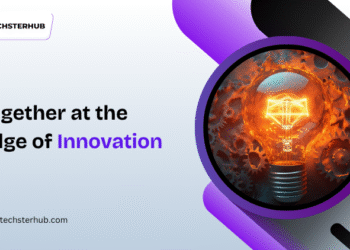The AI and graphics processing giant Nvidia has released a revolutionary AI model known as Cosmos-Transfer1. The new model will transform robot training through simulation environments which promises to accelerate and improve task learning in robots. This novel AI model will transform robotic capabilities in industrial, medical and daily use scenarios by creating smarter and more adaptable robots that can handle complex tasks.
The advancement of AI technology has led to robots gaining significant importance across manufacturing, healthcare, and logistics sectors. The process of teaching robots’ specific tasks requires both significant time and financial resources. The Cosmos-Transfer1 AI model from Nvidia enhances robot training efficiency and reduces costs while speeding up the process by using sophisticated simulation technologies. We will explore the mechanics of this new model and the reasons behind its widespread excitement.
What is the Cosmos-Transfer1 AI Model?
Cosmos-Transfer1 represents an advanced AI model that enables robots to acquire new abilities through simulation training. Robot training traditionally requires real-world task execution which creates safety hazards and incurs high expenses and lengthy time frames. Training robots to pick up objects or navigate warehouses needs extensive physical trial and error leading to potential robot wear and tear or resource depletion.
Nvidia transforms robotic training processes through simulation with Cosmos-Transfer1 to accelerate learning. The system generates realistic virtual spaces where robots can safely practice their tasks and learn through trial and error without encountering real-world risks. Through simulations robots achieve quicker training because they manage to execute numerous virtual tasks in much less time than physical training would allow.
How Does Cosmos-Transfer1 Work?
The Cosmos-Transfer1 AI model utilizes Nvidia’s advanced computing platforms which include graphics processing units (GPUs) and deep learning algorithms to perform its functions. Through transfer learning and simulation-based training robots gain the ability to learn new capabilities.
- Transfer Learning: This technique enables the application of knowledge acquired from one task to solve a related task that differs from the original one. A robot that learns block stacking in one simulation can transfer that knowledge to stack different objects in future tasks without prior exposure to those specific items. This approach leads to a significant reduction in the time required to train robots with new tasks.
- Simulation-Based Training: Robots have the ability to practice tasks within virtual environments instead of executing tasks in the physical world. Highly accurate simulations allow robots to learn appropriate responses to different situations by mimicking real-world scenarios. Robots have the ability to identify their mistakes and adapt their behavior while improving their performance without real-world trial-and-error costs.
By combining these methods Cosmos-Transfer1 delivers an enhanced approach for robot training that maximizes flexibility and efficiency. Robots can practice their skills in virtual worlds instead of going through lengthy real-world training periods before moving to real-world environments for successful execution.
Why Is Cosmos-Transfer1 Important for Robotics?
Cosmos-Transfer1 delivers massive benefits to robotic training programs. These foundational elements demonstrate why this AI model represents a major breakthrough.
- Faster Training: Simulation offers robot training which stands out due to its drastic speed advantage. Robot training for real-world tasks requires a significant amount of time to complete. Simulation methods enable robots to go through thousands or hundreds of training scenarios in much shorter time frames. The shortened training duration enables robots to reach operational status much more rapidly.
- Cost-Effectiveness: The real-world robot training process demands physical resources such as time, equipment, and occasionally human supervision to guide the training. Simulation training offers a more economical approach because robots can train in virtual environments without requiring physical resources. The reduced cost of robot training enables companies to deploy robotic systems widely.
- Safe Learning Environment: The process of training robots within real-world conditions exposes both the robot and its environment to potential damage. Simulations allow robots to commit errors without damaging themselves or the environment around them. Simulations enable practitioners to evaluate risky or intricate tasks in a secure virtual setting before applying them to real-life scenarios.
- Scalability: Simulation training supports the ability to conduct mass-scale training operations for robots. The model enables companies to simultaneously train multiple robots across various virtual environments which would not be feasible in the physical world. The ability to deploy more robots within industrial settings accelerates automation processes and introduces robots more frequently into daily life.
- Versatility Across Industries: The applications of Cosmos-Transfer1 are vast. Robots serve various functions across multiple industries including manufacturing, healthcare, and autonomous vehicle technology. Simulation enables robots to receive training for specialized tasks that each industry demands. A warehouse robot needs to master navigation through intricate layouts while a hospital robot learns how to support medical staff. Simulation provides the opportunity to develop highly customized training programs for robots across different sectors.
Applications of Cosmos-Transfer1 in the Real World
The Cosmos-Transfer1 AI model holds broad application potential that promises significant industrial impact.
- Manufacturing and Logistics: Robots perform assembly of products along with picking up items and sporting goods in factories and warehouses. By implementing Cosmos-Transfer1, robots can be trained to complete tasks faster and more accurately which leads to increased productivity and fewer mistakes.
- Healthcare: The healthcare industry now utilizes robots to support doctors and nurses in their work while also performing surgical procedures and providing patient care. Healthcare robots trained in virtual environments through Cosmos-Transfer1 could assist with multiple medical procedures and patient care scenarios to enhance patient outcomes while minimizing human error.
- Autonomous Vehicles: The technology that powers Cosmos-Transfer1 holds potential applications in the training of autonomous vehicles including self-driving cars and drones. Training autonomous vehicles through simulation of different driving situations prepares these systems to manage complex traffic and environmental changes which improves their safety.
- Service Robots: Robots are beginning to operate in households as well as hotels and restaurants where they perform cleaning tasks, deliver food, and provide customer service assistance. The Cosmos-Transfer1 model helps robots learn better human interaction while adapting to varied environments to enhance their usefulness for day-to-day life.
Challenges and the Future of Robot Training
The Cosmos-Transfer1 model shows great potential yet presents several challenges that need to be addressed. A principal challenge resides in making sure that simulation environments accurately reflect real-world conditions. The effectiveness of robot learning depends on virtual environments that accurately represent real-world scenarios.
When simulation environments fail to match real-world conditions, robots encounter difficulties during the transition to physical environments. The advancement of robot capabilities will lead to more complex tasks for them to perform. The Cosmos-Transfer1 system needs to develop further to meet more sophisticated requirements allowing robots to manage diverse real-world situations.
Conclusion: A New Era for Robot Training
The Cosmos-Transfer1 AI model developed by Nvidia represents a significant advancement in robotic technology. The new training model uses advanced simulation technology to provide quick and cost-effective robot training options which enhance adaptability for complex tasks across different industries while ensuring safety. The rising importance of robotics in everyday life means innovations like Cosmos-Transfer1 are pushing robots beyond traditional limits to transform industries and enhance human lives.
Cosmos-Transfer1 stands at the forefront of future robotics development by enabling robots to achieve unprecedented learning speed and intelligence.











